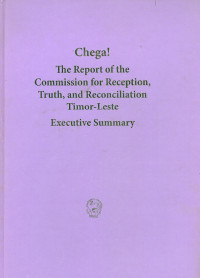
Text
Questions & answers : about the commercial sexual exploitation of children
Commercial sexual exploitation of children consists of criminal practices that demean and threaten the physical and psychosocial integrity of children. The Declaration and Agenda for Action against Commercial Sexual Exploitation of Children1 is a groundbreaking instrument that defines the commercial sexual exploitation of children as: “A fundamental violation of children’s rights. It comprises sexual abuse by the adult and remuneration in cash or kind to the child or a third person or persons. The child is treated as a sexual object and as a commercial object. The commercial sexual exploitation of children constitutes a form of coercion and violence against children, and amounts to forced labour and a contemporary form of slavery.” The primary, interrelated forms of commercial sexual exploitation of children – often referred to as CSEC – are prostitution of children, child pornography and trafficking of children for sexual purposes. Other forms include child-sex tourism, and in some cases, child marriage. Children can also be commercially sexually exploited in other, less obvious ways, such as through domestic servitude or bonded labour. In these cases, a child is contracted to provide work but the employer believes that the child can also be used for sexual purposes. Commercial sexual exploitation of children exists because there is a demand for it. Deterrence and criminal punishments are important, but any efforts to end the commercial sexual exploitation of children must also recognise the need to challenge and condemn behaviours, beliefs and attitudes that support and sustain this demand. It is important to note that not only girls, but also large numbers of boys, are exploited in commercial sex.
Availability
| KP.IV.6.000084 | KP.IV.6 IND q | My Library | Available |
Detail Information
- Series Title
-
-
- Call Number
-
KP IV.6 IND q
- Publisher
- [s.l.] : Ecpat international., 2001
- Collation
-
36 hlm. : ilus. ; 20 cm.
- Language
-
English
- ISBN/ISSN
-
-
- Classification
-
KP.IV.6
- Content Type
-
-
- Media Type
-
-
- Carrier Type
-
-
- Edition
-
-
- Subject(s)
- Specific Detail Info
-
-
- Statement of Responsibility
-
-
Other version/related
No other version available
File Attachment
Comments
You must be logged in to post a comment
 Computer Science, Information & General Works
Computer Science, Information & General Works  Philosophy & Psychology
Philosophy & Psychology  Religion
Religion  Social Sciences
Social Sciences  Language
Language  Pure Science
Pure Science  Applied Sciences
Applied Sciences  Art & Recreation
Art & Recreation  Literature
Literature  History & Geography
History & Geography